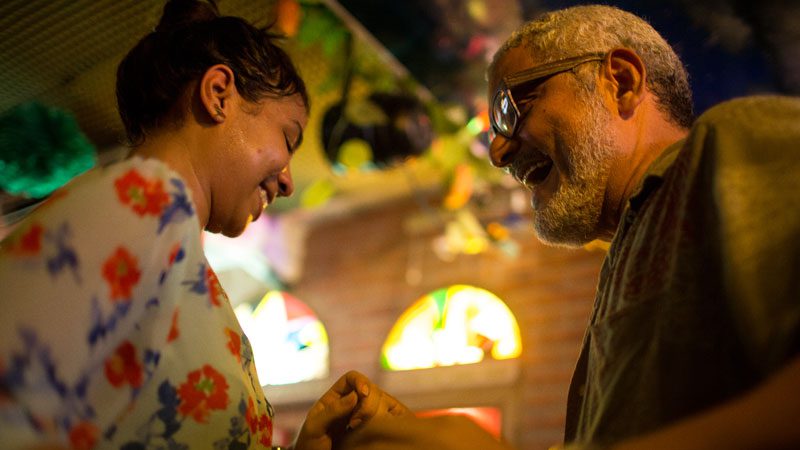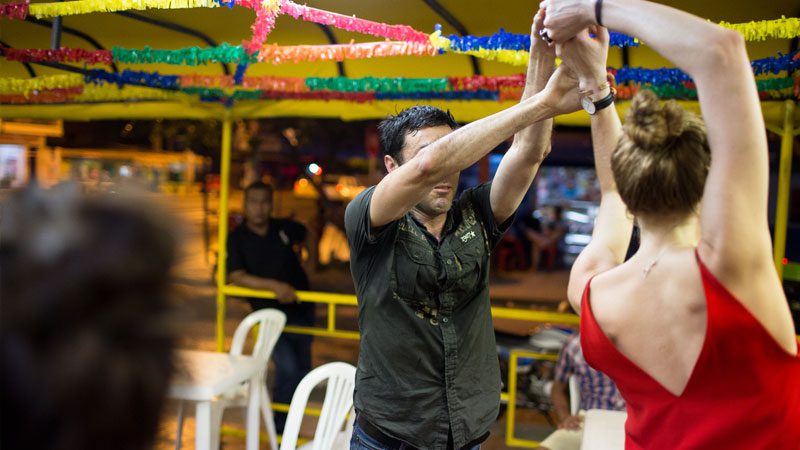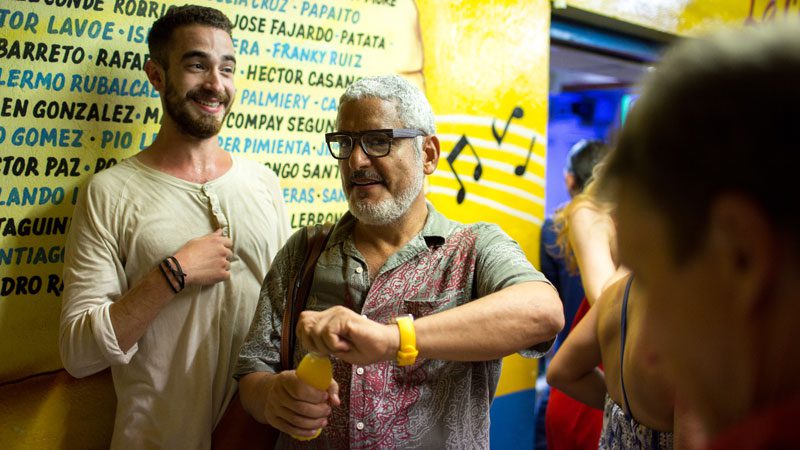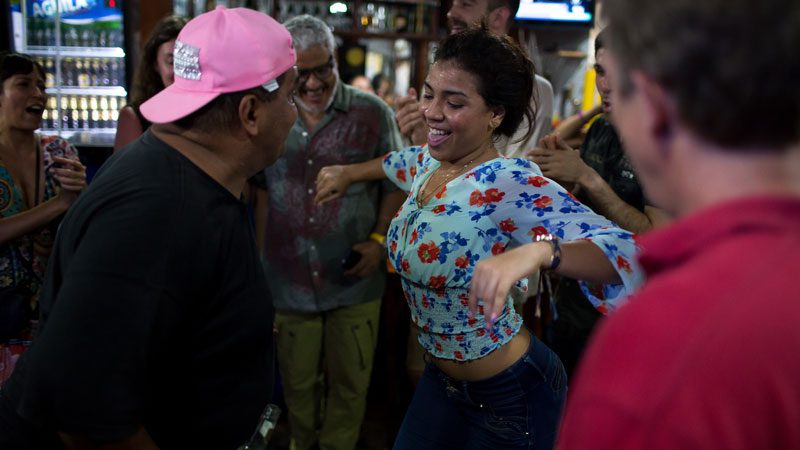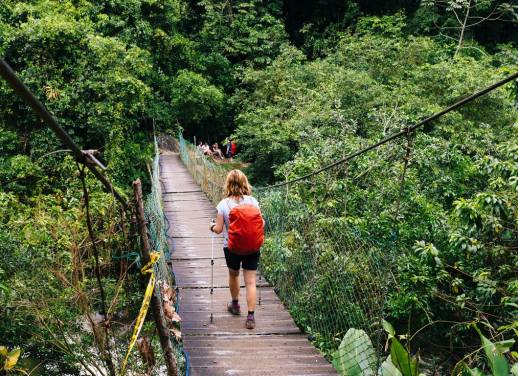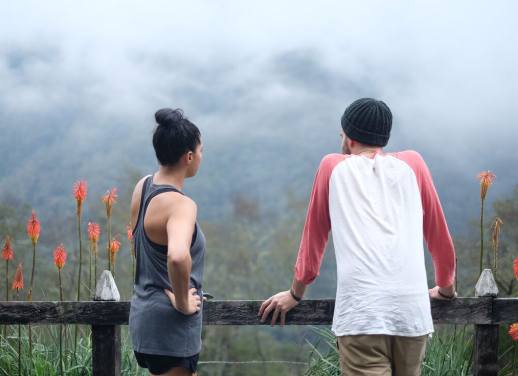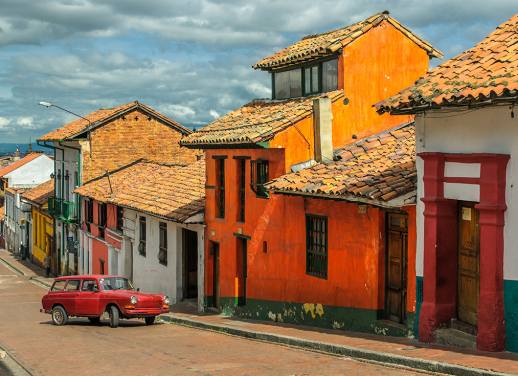1,2,3,4… 1,2,3,4… 1,2,3,4
The rhythm pounds in your chest and slowly you stop watching your feet. The energy is infectious. Suddenly your hips catch the music.
It’s hot. You’re sweating. Two perfectly happy strangers sharing their entire body’s water and salt content in an intimate moment of rhythmic connection. Dripping and grinning and twirling.
You should feel like an awkward giraffe in the midst of all of these coordinated Colombians. But everywhere you look you’re met with encouragement and adoration, iPhone cameras and smiles. This isn’t a dance, a night out, a moment in time. This is life.
We wound through the back streets of Cartagena, silent and heavy with humidity – until we found a suburban salsa club. A humble street corner heaving with writhing bodies, pulsing with music, and dripping in Aguadiente (‘fire water’, the local spirit of choice). The chairs were plastic, the walls non-existent and the dance floor wherever you found your feet. It was a Monday night.
Colombians don’t save their pent-up energy for a night of debauched lunacy come Friday. They dance to shake off Monday’s brutality, they dance to counter Wednesday’s banality, they dance to greet a new colleague, an old aunt, a stranger. They dance in their living rooms with their parents before breakfast, they dance on the streets with old friends after dark. They dance in celebration and in commiseration too.
Dance isn’t inextricably linked with alcohol and sex here. It is a testament to your passion, your skill and your appreciation for your culture. Salsa music is deified. The songs and artists are known and loved.
An 80 year old, half my height, took my hand and led me through the steps of his beloved dance, talking endlessly about the music – who played it, what year it was popular, when the artist died, how the artist died. He spoke of Cali, ‘the birthplace of salsa’, the different styles of dance, the different eras. Salsa ran in his blood. His ageing feet faltered slightly, but his heart still beat in 4/4.
Beside us two young Colombians passionately embraced my new friend’s favourite song, daring one another to dance faster, more intensely, more intricately. Their faces beamed beneath beads of sweat, their hips moved as if possessed. It was impossible to ascertain if they’d known each other their whole lives or if they’d met just moments before. It felt like a lifetime of words and thoughts and feelings were falling at their feet as they moved.
As I looked on in awe, uncomfortable flashes of Australian/ American/ English nightclubs came to mind – flailing limbs, awkward circles, the ‘sprinkler’, spilt drinks, maybe some uncomfortable grinding. (Please excuse the generalization, but I feel this might be a familiar scene). I suddenly felt there was something amiss.
We’re missing out.
If salsa were a language it would speak words we haven’t yet imagined.
There’s a joie de vivre here that we’re somehow just not tapped in to. A connection to history, to each other, to the arts that we just can’t imagine. And I can’t help but feel that this is how life should be.
I may well have become the feature of every ‘gringa tries to salsa’ YouTube video ever published, but I actually couldn’t care less. That one night crawling the salsa clubs of outer Cartagena made a profound impact, left a little mark upon my heart, and it’s one I hope not to shake anytime soon. On the dance floor or otherwise.
All images c/o Nathan Legiehn

